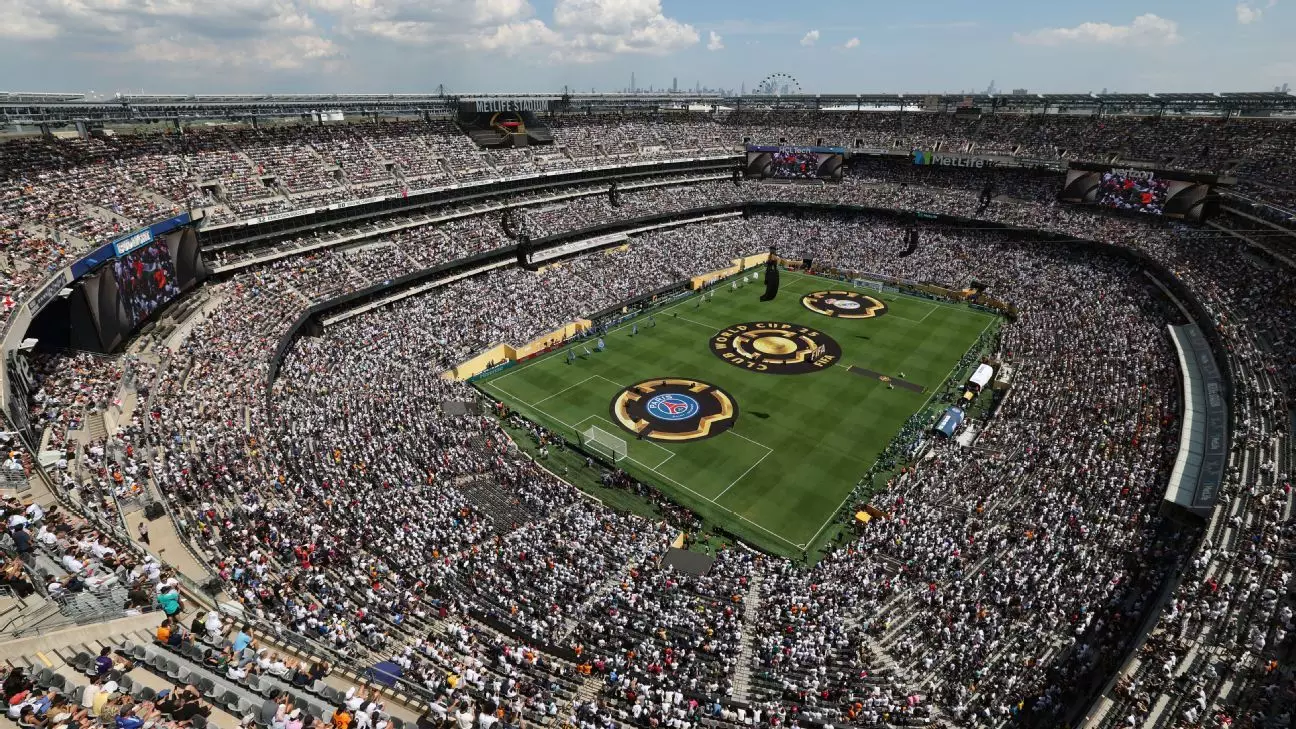The conclusion of the Club World Cup in Los Angeles marks a pivotal turning point for North American soccer. This event has transcended mere competition, acting instead as a catalyst that has sparked renewed confidence and ambition within the region’s sporting landscape. The enthusiasm of over three million spectators not only reflects growing interest but also signifies a cultural shift—one where North America begins to stake a more prominent claim on the global football stage. This surge of energy, passion, and engagement demonstrates an emerging maturity, positioning the United States, Mexico, and Canada as serious contenders in international soccer discussions.
Major League Soccer Commissioner Don Garber’s remarks underscore the broader significance: this tournament served as a validation of the region’s potential and resilience. His acknowledgment that the event was a “breakthrough” encapsulates how pivotal this moment could be in shaping perceptions, investments, and future ambitions. Despite skepticism and doubts about hosting such a high-caliber competition, North America turned challenges into triumphs. The success of this tournament is not just measured in attendance figures but in the sentiment it has galvanized—a sentiment rooted in pride, perseverance, and a hunger for global recognition.
Reimagining Soccer Infrastructure and Fan Experience
Hosting an inaugural event of this magnitude in unfamiliar venues pushed North American infrastructure beyond its comfort zone. Stadiums that had rarely, if ever, hosted events of this scale scrambled to adapt, testing their capabilities under intense pressure. Garber’s praise for the logistical achievements highlights the narrative that the region can effectively manage complex operations while delivering memorable experiences to fans.
The event’s success also points to a collective reimagining of fan engagement. The diverse crowds, the electrifying atmosphere, and the festive environment illustrate a significant departure from traditional stereotypes of American sports spectatorship. This shift signals that North American fans are not only passionate but increasingly sophisticated, embracing global football culture with enthusiasm. Such a transformation is crucial—it indicates that the region is not merely a consumer of international football but is becoming active, vibrant contributors to its growth.
Strategic Significance for Future Tournaments
Beyond the immediate celebration, Garber’s comments emphasize the strategic importance of this experience for future events. The tournament served as a testing ground for stadium readiness, ticketing systems, and operational protocols—crucial factors that will influence the smooth execution of the FIFA World Cup scheduled to be hosted across the continent next year.
The tournament also illuminated the capacity of North American clubs to punch above their weight. When Lionel Messi’s Inter Miami defeated Porto—a historic first for MLS—expectations shifted. It was a clear message that local teams are more than just spectators; they are players capable of competing against the best in the world. Garber’s acknowledgment of the emerging strength of leagues outside Europe—particularly in Brazil and North America—reflects a broader understanding that global soccer power dynamics are evolving.
Challenges as Opportunities for Growth
Of course, the journey was not without hurdles. The rapid stadium conversions, weather conditions, and new logistical protocols posed serious challenges. Yet, Garber’s realistic acknowledgment that “nothing is perfect” is a testament to a growth mindset. Each obstacle encountered was a learning experience, an opportunity to refine and innovate. This resilience and commitment to improvement are vital for establishing long-term success and credibility.
The event’s relatively seamless execution—despite imperfections—sends an important message: North America is committed to evolving into a global soccer hub. There is an understanding that excellence is a continuous pursuit, and every tournament is a step forward in that journey. The anticipation now is that future editions will be even more sophisticated, engaging, and reflective of the region’s aspirations to be at the forefront of the global game.
A New Era for North American Soccer
This Club World Cup has laid the groundwork for a paradigm shift. No longer content with being perceived as merely an emerging market, North America is asserting itself as a serious player—one with the ambition, infrastructure, and passion to drive the sport forward. The regional leagues are gaining exposure, talents are emerging on the world stage, and the fans are becoming more deeply invested. With each passing year and every tournament, the narrative is shifting—from skepticism to confidence, from spectators to active contributors.
Indeed, North America’s future in soccer looks promising. The momentum generated by this event could set the foundation for a new golden era—an era where the continent not only hosts prestigious tournaments but also produces championship-winning teams and world-class players. The world might be watching now, but soon it will be listening—the roar of North American soccer enthusiasts echoing across the sport’s global landscape, echoing a promise that this region is destined for greatness.

Leave a Reply